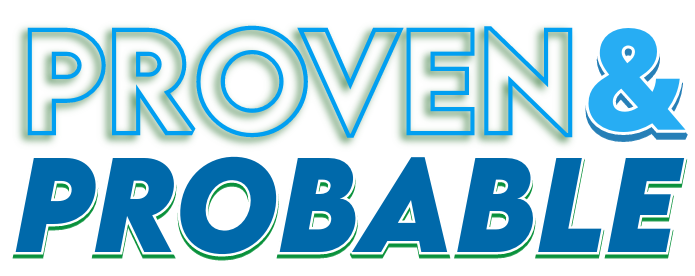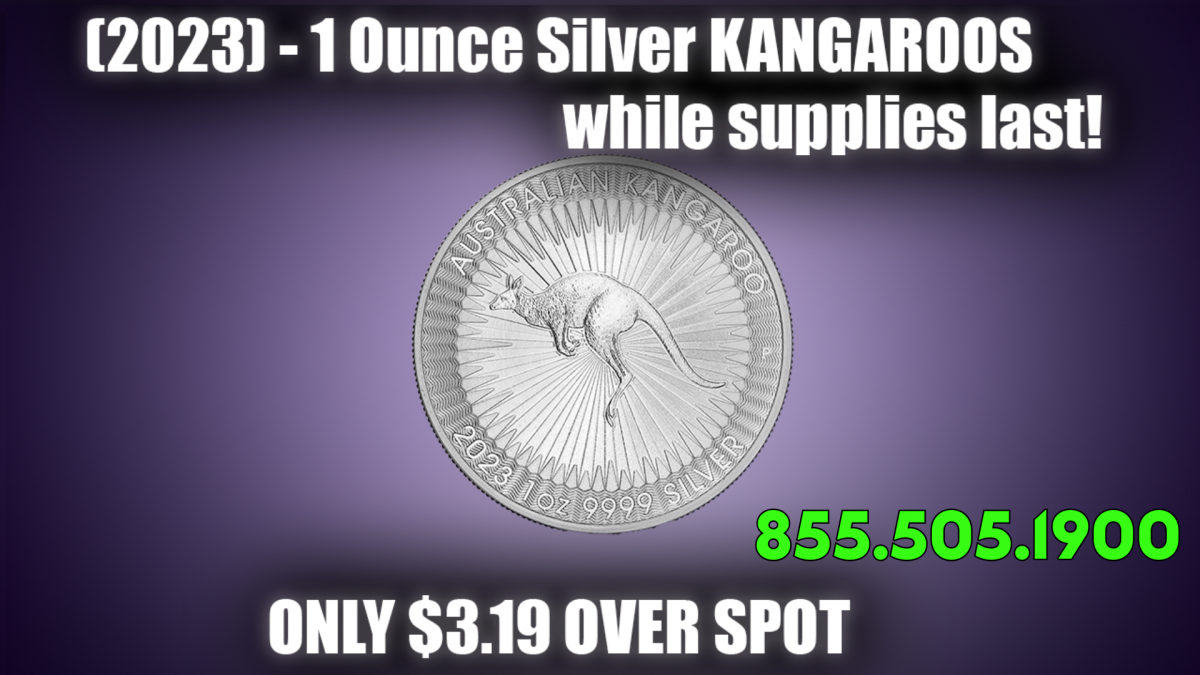By Nick Giambruno

Doug Casey, Author of “Speculator” and “Drug Lord”
Advocates of sound money have dreamed of a gold-backed digital currency for many years.
Now, with the advent of blockchain technology, the dream of a viable, gold-backed digital currency is finally coming true. And the potential is enormous. Dozens of gold-backed digital currencies are sprouting up.
Peter Grosskopf, CEO of Sprott, called it “the most important thing to happen to the gold market in the last several decades.”
He was referring to the marriage of gold with the blockchain. Shortly thereafter Sprott launched Vaultchain, a gold-backed crypto it developed with its partners.
When Sprott makes a big move into the gold-backed crypto space it’s a definitive sign of where things are headed.
That’s why I recently spoke with Doug Casey and Rick Rule, both of whom are excited about what the huge potential of a gold-backed crypto.
It’s hard to think of two other people who have had more experience and success in the resource market — and gold in particular — than Doug and Rick.
Here’s what they told me:
Nick Giambruno: Rick, you’ve been in the resource market for decades. But recently we discussed how you’re looking very closely at gold-backed cryptocurrencies. It really seems to be this is where there is an intersection of the resource market and the technology of the blockchain and decentralized databases.
So, what made you interested in gold-backed cryptos?
Rick Rule: Well, first we believe that the potential audience for gold and cryptos is very similar. The people who believe that there should be mediums of exchange that aren’t government sponsored will adopt both to cryptos and gold.
Second, we saw how the distributed ledger could make the inefficiencies of the gold trade go away to the benefit of all users.
Third, we saw a circumstance where there was a proliferation of crypto products that were in and of themselves faith-based currencies, floating abstraction. Dogecoin is an example that started off as a joke, and then got a bid.
We believe that using the distributed ledger technology to make gold trading more effective was something that the market wanted, and secondly a logical extension of the Sprott brand, which is in some investors’ minds synonymous with precious metals. We already manage well in excess of $4 billion in exchange traded precious metals on the New York Stock Exchange, and thought an extension of our brand to a crypto product was a logical thing to do.
What was holding us back was the technological capability internally to cause that to occur, and when IEX (Investors Exchange) — the sort of flash boys guys — came into the equation and in fact approached us about being their partner in enabling distributed ledger and blockchain technologies in gold, that was just an offer too good to pass up.
Nick Giambruno: Doug, you’ve talked a lot about sound money over the years, so how does a gold-backed crypto play into your notion of sound money and the characteristics of it?
Doug Casey: Very well. One of the disadvantages of gold is that it’s hard to transport. While today it’s not illegal to cross borders with gold, in two separate countries on two separate continents when I was carrying about a dozen silver one-ounce coins and both times they stopped me at the x-ray machine and examined them. No problem because it was silver and they weren’t worth anything, but if they had been gold it would’ve been a problem.
So it’s not illegal to transport gold, but it’s becoming inconvenient to do so. I think that a gold-backed crypto will kiss that and make it better.
Nick Giambruno: Rick, you mentioned how the blockchain helps take away some of the inefficiencies of traditional gold warehousing companies. Can you elaborate on that?
Rick Rule: Sure. If one of your readers wanted to go out and buy, say, ten ounces of physical gold, the spot price is the reference price. But the truth is at many bullion dealers they’ll pay a 3% or 3.5% markup.
Should they change their mind two hours later and decide to sell it, they wouldn’t get spot on the sell side either. They’d get a 3% or 3.5% markdown, meaning that the simple act of buying and selling ten ounces of gold can cause the investor to experience 7% or 700 basis points of friction.
On top of that, one often pays to store and insure that gold, and they also pay for shipping and receiving.
If you eliminate the vast bulk of those transaction fees, you can see the incredible increase in economic efficiency for buying and selling gold through distributed ledger, through the blockchain.
And that was really the most important thing that appealed to us. We just wanted to make the gold trade much more efficient for those investors who believed that gold was a savings product, that gold was money.
Nick Giambruno: Doug, I personally believe there will never be a gold-backed crypto that can completely stand in for gold. There is simply no substitute for owning physical gold that you can readily hold in your hand.
However, owning large amounts of physical gold presents its own challenges. It’s hard to store securely, move long distances, and break down into smaller amounts. A gold-backed crypto can help address these drawbacks.
That said, any gold-backed crypto will have inevitably have some counterparty risk. Physical gold in your direct possession does not.
Instead of being a substitute for owning physical gold in your own possession, I believe gold-backed cryptos are complimentary tool for individuals all around the world to access sound money.
What’s your take?
Doug Casey: I think it’s a great innovation. The reasons why cryptos are catching on in the developed world are pretty obvious. We don’t need to go about that here. I think the real future for cryptos, and this is especially true of gold-backed cryptos, is going to be in the Third World, because 75% of the people on the planet have to use toilet paper currencies — like the Zambian Kwacha, the Argentine peso, or the Venezuelan Bolivar — that have little value within their countries of issuance and no value at all outside of the borders.
Especially since these people tend to understand gold, it’s tangible, it’s more understandable than just the idea of a cryptocurrency if they see it represents gold, I think this type of this is eventually going to catch fire in these Third World countries where they’ll be able to save and transfer wealth in something that’s of real value as opposed to just some locally issued government toilet paper. This is a wonderful innovation not just for us but for the little impoverished people out there in the world.
Nick Giambruno: Exactly… why would anyone abandon their wealth to a constantly depreciating government fiat currency, sitting in an insolvent fractional reserve bank when you can easily save a gold-backed crypto?
On that note, how does a gold-backed crypto help one with political diversification? Is it a new tool in the toolkit?
Doug Casey: I want to emphasize, especially for Americans, that it’s not just a question of what you have and what you’re doing in the market, but where you’re keeping these things. Everyone, not just Americans, should try to have half of their gold, cash, and investments outside of their countries of citizenship and/or residence. You don’t want all of your assets within easy reach of whatever government considers you its milk cow.
Nick Giambruno: Rick, what features does a gold-backed crypto need to be credible… redemption, reputable partners, auditability?
Rick Rule: In answer to your question, the answer is yes, all of that is important.
The first thing is that there will be and there have been numerous crypto scams where the promoters of the crypto either caused or paid to cause rapid price escalation in a token that had no intrinsic value, and whose price ultimately fell to its intrinsic value, which is zero.
It’s important that investments are made in the architecture of the distributed ledger product, and in the maintenance of the distributed ledger product.
The distributed ledger does not — contrary to popular opinion — maintain itself.
Bitcoin is an example. That whole process is sustained by miners who are rewarded with Bitcoin. In the absence of something like that a system crashes.
I think it’s important that crypto gold be redeemable and be audited.
In the case of Sprott I think one of the reasons why we were chosen as a partner is because we already manage well over $4 billion in exchange traded gold products, and we have 20 years of experience with people who want to trade their certificates for physical precious metals and get delivery. We do it every day.
Doug will hate me for this, but our gold is stored at the Royal Canadian Mint. We joke that our security is provided by NATO.
So I would suggest to you examine the architecture of the system, the reliability of the sponsors, and the redeemability and security of the gold behind gold-backed cryptos very carefully.
One of the things that’s given me personally great comfort is that of the three-dozen some odd entrants to the market that we’re aware of, we are the ones that have had the broadest adaption from the gold mining community.
If you look at our shareholders registered: Goldcorp, Wheaton Precious Metals, Iamgold, Agnico Eagle, we’ve done transactions already where Goldcorp transferred 3,000 ounces of gold to us in return for ledgers because it saved them hundreds of thousands of dollars in transaction fees already.
Nick Giambruno: A gold-backed crypto necessarily must have one foot in the real world and one foot in the digital world. If it has a foot in the real world it’s going to be susceptible to governments coercing them somehow, unfortunately.
There are plenty examples of crypto projects and precious metals initiatives thinking they could flout regulations, no matter how ridiculous they may be. What inevitably happens is they end up painting a big, red target on their backs. The government eventually shut them down.
How could a gold-backed crypto today avoid a similar fate?
Rick Rule: Well, when we began in conjunction with our partners developing our own product, we were very aggressive in communicating what we were doing and soliciting feedback from various regulators in both the United States and Canada.
While in an ideal world that wouldn’t be a requirement, that’s not the world that Sprott as a regulated entity inhabits. The consequence of that is that we didn’t surprise the regulatory authorities with anything, and we didn’t make any claims whatsoever that we were exempt from regulations that would become proposed.
With our product — because it isn’t a token, it’s really a deposit receipt or commodity receipt on the distributed ledger rather than a token — and because we were unsure of the way that the SEC would regulate the product, we decided to comply with know your customer regulations.
I won’t bore your readers with the arcane details, but it’s important that people understand that this distributed ledger receipt represents actual gold stored by us at the Royal Canadian Mint. It’s redeemable for gold and it’s exchangeable.
We have chosen internally to believe that gold-backed cryptos will ultimately attempt to be regulated by the CFTC or by the SEC or one of the banking regulators, and the consequence of that is that to participate in our offering you do need to open an account with a participating financial services firm.
The lesson that we’ve learned managing institutional money, managing ETFs, is that if you are going to play in investment markets and financial services markets, and think you’re going to circumvent regulation, you’re mistaken. That may or may not sit well with all your readers, but it’s the truth nonetheless.
Nick Giambruno: The value of Bitcoin and other cryptocurrencies can be wildly volatile. This is a problem for anyone looking to use cryptos in the regular course of business.
Gold-backed cryptos, on other hand, should have relatively stable prices. They also can give people the ability to send and receive gold as easy as sending email.
This should make them appealing to merchants, lenders, businesses, investors, escrow services and the like… anyone who wants to conduct business in gold — but also wants the convenience of cryptocurrencies.
Businesses could use gold-backed cryptos to pay rent, salaries, or other ordinary expenses. The possibilities are enormous. I think that could open a huge new ecosystem.
That’s why I think gold-backed cryptos could create a genuine revolution in finance and why I’m so excited about them in general.
The demand for gold-backed cryptos — which is really the demand for sound and convenient money — is potentially enormous. It can be useful to anyone.
Do you see this evolution in the gold-backed crypto space playing out?
Rick Rule: I absolutely do. If you look at the trading volume and liquidity that gold enjoys today and you add that to that the incredible economic efficiency of the distributed ledger, the ultimate applications that you’re talking about as a transfer mechanism, as a store of wealth, as collateral, an entirely new ecosystem, really are limitless.
Nick Giambruno: Doug and Rick, thank you for your time. If readers would like more information about Vaultchain they can send an email to TradeWind@sprottglobal.com.
The post Gold-Backed Cryptos: Doug Casey and Rick Rule Talk Potential of Digital Currencyappeared first on Sprott Media.
Read in browser »
 
Recent Articles:
|







